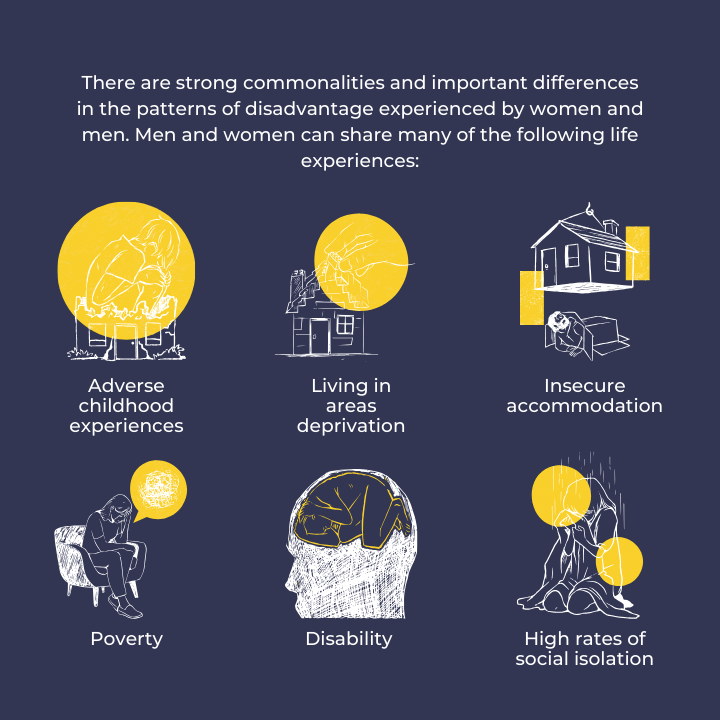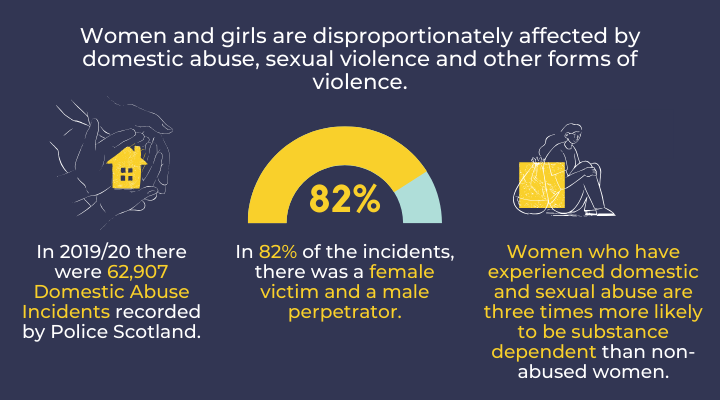

The adoption of a Gendered Approach begins with the recognition that men and women and non-binary individuals experience the world differently. They will face different issues, will have different prevalence rates, the reasons for challenges they face will differ and they will be more or less likely to experience certain issues just because of their gender or gender identity. Gender should be considered from the outset in the design and delivery of services and prevention initiatives.
The Data Gender Gap
Historically data gathered does not include gender. Gendered dis-aggregated data collection will give a richer picture of what is happening for men and women to be able to better support their differing and intersecting complexities. This is related to the Key-Theme Evidence Informed.
The Gendered Lens
Women face combinations of disadvantage at least as serious as those faced by men and on an equivalent scale. The number of women facing multiple disadvantage has been historically underreported due to a definition of multiple disadvantage that did not recognise the different experiences of women. It included substance dependent, homelessness and offending. When using this definition 80% of those experiencing multiple disadvantage are men. Research has shown a new definition of multiple disadvantage that includes poor mental health, experience of interpersonal violence and abuse, homelessness, and substance use will show an equal split of disadvantaged experienced by men and women.


At the same time, experiences diverge and disadvantages coalesce in different ways. Poor mental health and violence and abuse are particularly significant in the lives of women, and poor mental health and substance misuse in the lives of men. Responsibility for child care, and the loss of children, also mark women’s experiences as different. There are also important insights into severe disadvantages faced by BAME women and by women who do not live in poverty.




The different context and barriers faced by women using substances highlights the need for a Gendered Approach to service provision to break down gender specific barriers to getting support.